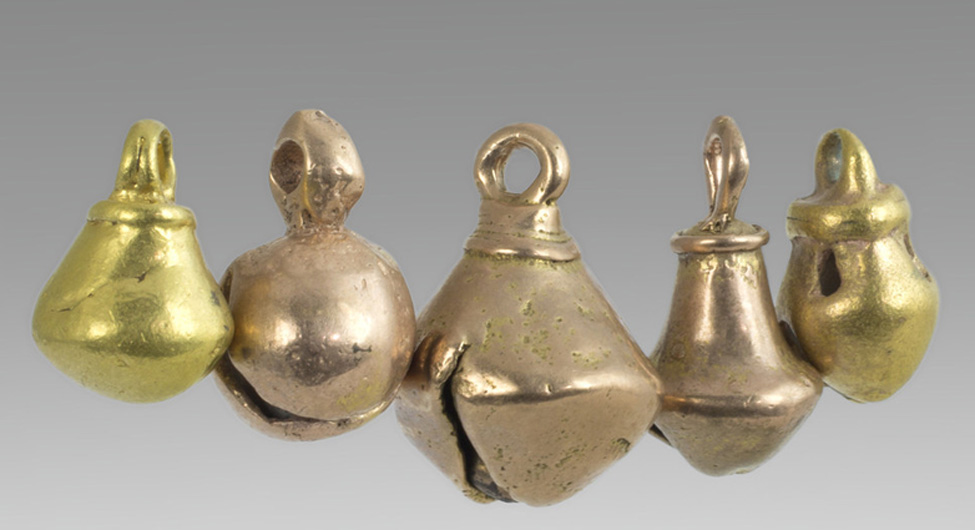Antiquities and Archaeological Material
Antiquities and Archaeological Material Acquisition Policy
Since its inception, the Mount Holyoke College Art Museum has engaged in the collection, display, and study of antiquities and archaeological material. These invaluable objects can serve as portals into the past and are utilized by students, professors, and researchers in a wide variety of disciplines. The Museum recognizes, however, the ethical questions raised by the collecting of antiquities and archaeological material and the damage caused by clandestine excavation of and illegal trade in these objects.
On November 17, 1970 the United Nations Educational, Scientific and Cultural Organization (UNESCO) ratified the Convention on the Means of Prohibiting and Preventing Illicit Import, Export and Transfer of Ownership of Cultural Property, commonly referred to as the UNESCO Convention. The UNESCO Convention specifies that collectors should not acquire archaeological material or antiquities that left their country of probable modern discovery (without valid export documents) after November 17, 1970 (henceforth referred to as 1970). Following ratification of the UNESCO Convention, the Association of Art Museum Directors established (and continued to revise) antiquities collection guidelines for museums. It was with these guidelines and the UNESCO Convention in mind that MHCAM established its own set of principles surrounding the acquisition of archaeological material and antiquities.
Our collecting policy is designed to support the Museum’s teaching and stewardship mission while upholding professional and ethical standards. In the case of an acquisition or long-term loan of any antiquity or archaeological material, the Museum’s curatorial staff will diligently research the provenance of the object and follow the requirements listed below. Objects will be reviewed by the Director, curatorial, education, and collections staff. The Art Museum Advisory Board, Mount Holyoke College faculty, and external scholars may also be consulted for provenance review. Each proposed acquisition will be assessed on a case-by-case basis, and additional measures as they relate to the Museum’s Nazi-era object and NAGPRA policies will be taken as necessary. The final decision about the acquisition of any antiquity or archaeological material will be made by the director. The Museum will post images of all new acquisitions of antiquities and archaeological material on its shared public database.
Purchase of antiquities and archaeological material
MHCAM will not purchase objects without an established provenance outside of their country of probable modern discovery before 1970 or valid export documents after 1970.
Acceptable provenance records for a purchase may include:
- Customs documents before 1970;
- Bill of sale before 1970;
- Exhibition history outside of country of probable modern discovery before 1970;
- Photographs of the object outside of country of probable modern discovery before 1970;
- Publication history outside of country of probable modern discovery before 1970.
Gift/bequest/long-term loan of antiquities and archaeological material
Acceptable provenance records for a gift/bequest/long-term loan may include (in addition to acceptable provenance records for a purchase):
- Personal documents dating before 1970 that record the object’s presence outside of its country of probable modern discovery;
- Timeline of the object’s ownership history indicating its presence outside of its country of probable modern discovery before 1970;
- Signed letter from the donor/lending institution indicating that the object was present outside of its country of probable modern discovery before 1970;
- Significant circumstantial evidence such that the Acquisitions Committee deems that the object was present outside of its country of probable modern discovery before 1970.
Ancient coins and numismatic material
Coins differ from other types of antiquities in that they were mass produced and duplicates are common. Coins were widely circulated in ancient times, which often makes it difficult to determine their country of probable modern discovery. Though coin collecting has been practiced since antiquity, history of ownership has regularly been disregarded and in many cases provenance records have not been kept.
Because of these and other factors, determining a coin’s history of ownership is oftentimes impossible. Coins lacking provenance documentation may, however, have been legally excavated, purchased, and exported decades ago or more recently. This is generally understood, even by those museums and collectors with stringent acquisition policies. As a result, in some cases coins have been excluded from legal import restrictions because provenance is so difficult to trace.
MHCAM reserves the right to make exceptions to the Antiquities and Archaeological Material Acquisition Policy for acquisitions of coins and numismatic material.
For any proposed acquisition of coins or numismatic material, MHCAM staff will diligently research history of ownership and attempt to ascertain provenance. The Acquisitions Committee will review all proposed purchases and gifts. Cumulative facts and circumstances will be evaluated, and the committee will make a recommendation for or against an acquisition. The final decision about any acquisition of coins or numismatic material will be made by the director. Like for all acquisitions of antiquities and archaeological material, the Museum will post images of and information about the objects on its database.
Questions?
Please contact artmuseum@mtholyoke.edu.

 Give
Give


